-
Financial reporting and accounting advisory services
You trust your external auditor to deliver not only a high-quality, independent audit of your financial statements but to provide a range of support, including assessing material risks, evaluating internal controls and raising awareness around new and amended accounting standards.
-
Accounting Standards for Private Enterprises
Get the clear financial picture you need with the accounting standards team at Doane Grant Thornton LLP. Our experts have extensive experience with private enterprises of all sizes in all industries, an in-depth knowledge of today’s accounting standards, and are directly involved in the standard-setting process.
-
International Financial Reporting Standards
Whether you are already using IFRS or considering a transition to this global framework, Doane Grant Thornton LLP’s accounting standards team is here to help.
-
Accounting Standards for Not-for-Profit Organizations
From small, community organizations to large, national charities, you can count on Doane Grant Thornton LLP’s accounting standards team for in-depth knowledge and trusted advice.
-
Public Sector Accounting Standards
Working for a public-sector organization comes with a unique set of requirements for accounting and financial reporting. Doane Grant Thornton LLP’s accounting standards team has the practical, public-sector experience and in-depth knowledge you need.
-
Tax planning and compliance
Whether you are a private or public organization, your goal is to manage the critical aspects of tax compliance, and achieve the most effective results. At Doane Grant Thornton, we focus on delivering relevant advice, and providing an integrated planning approach to help you fulfill compliance obligations.
-
Research and development and government incentives
Are you developing innovative processes or products, undertaking experimentation or solving technological problems? If so, you may qualify to claim SR&ED tax credits. This Canadian federal government initiative is designed to encourage and support innovation in Canada. Our R&D professionals are a highly-trained, diverse team of practitioners that are engineers, scientists and specialized accountants.
-
Indirect tax
Keeping track of changes and developments in GST/HST, Quebec sales tax and other provincial sales taxes across Canada, can be a full-time job. The consequences for failing to adequately manage your organization’s sales tax obligations can be significant - from assessments, to forgone recoveries and cash flow implications, to customer or reputational risk.
-
US corporate tax
The United States has a very complex and regulated tax environment, that may undergo significant changes. Cross-border tax issues could become even more challenging for Canadian businesses looking for growth and prosperity in the biggest economy in the world.
-
Cross-border personal tax
In an increasingly flexible world, moving across the border may be more viable for Canadians and Americans; however, relocating may also have complex tax implications.
-
International tax
While there is great opportunity for businesses looking to expand globally, organizations are under increasing tax scrutiny. Regardless of your company’s size and level of international involvement—whether you’re working abroad, investing, buying and selling, borrowing or manufacturing—doing business beyond Canada’s borders comes with its fair share of tax risks.
-
Succession & estate planning
Like many private business owners today, you’ve spent your career building and running your business successfully. Now you’re faced with deciding on a successor—a successor who may or may not want your direct involvement and share your vision.
-
Tax Reporting & Advisory
The financial and tax reporting obligations of public markets and global tax authorities take significant resources and investment to manage. This requires calculating global tax provision estimates under US GAAP, IFRS, and other frameworks, and reconciling this reporting with tax compliance obligations.
-
Transfer pricing
Recognized as a leader in the transfer pricing community, our award-winning team can help you expand your business beyond borders with confidence.

-
Transactions
Our transactions group takes a client-centric, integrated approach, focused on helping you make and implement the best financial strategies. We offer meaningful, actionable and holistic advice to allow you to create value, manage risks and seize opportunities. It’s what we do best: help great organizations like yours grow and thrive.
-
Restructuring
We bring a wide range of services to both individuals and businesses – including shareholders, executives, directors, lenders, creditors and other advisors who are dealing with a corporation experiencing financial challenges.
-
Forensics
Market-driven expertise in investigation, dispute resolution and digital forensics
-
Cybersecurity
Viruses. Phishing. Malware infections. Malpractice by employees. Espionage. Data ransom and theft. Fraud. Cybercrime is now a leading risk to all businesses.
-
Consulting
Running a business is challenging and you need advice you can rely on at anytime you need it. Our team dives deep into your issues, looking holistically at your organization to understand your people, processes, and systems needs at the root of your pain points. The intersection of these three things is critical to develop the solutions you need today.
-
Creditor updates
Updates for creditors, limited partners, investors and shareholders.

-
Governance, risk and compliance
Effective, risk management—including governance and regulatory compliance—can lead to tangible, long-term business improvements. And be a source of significant competitive advantage.
-
Internal audit
Organizations thrive when they are constantly innovating, improving or creating new services and products and envisioning new markets and growth opportunities.
-
Certification – SOX
The corporate governance landscape is challenging at the best of times for public companies and their subsidiaries in Canada, the United States and around the world.
-
Third party assurance
Naturally, clients and stakeholders want reassurance that there are appropriate controls and safeguards over the data and processes being used to service their business. It’s critical.
-
 Assurance Important changes coming to AgriInvest in 2025AgriInvest is a business risk management program that helps agricultural producers manage small income declines and improve market income.
Assurance Important changes coming to AgriInvest in 2025AgriInvest is a business risk management program that helps agricultural producers manage small income declines and improve market income. -
 Tax alert Agricultural Clean Technology ProgramThe Agricultural Clean Technology Program will provide financial assistance to farmers and agri-businesses to help them reduce greenhouse gas (GHG) emissions.
Tax alert Agricultural Clean Technology ProgramThe Agricultural Clean Technology Program will provide financial assistance to farmers and agri-businesses to help them reduce greenhouse gas (GHG) emissions. -
 Tax alert ACT Program – Research and Innovation Stream explainedThe ACT Research and Innovation Stream provides financial support to organizations engaged in pre-market innovation.
Tax alert ACT Program – Research and Innovation Stream explainedThe ACT Research and Innovation Stream provides financial support to organizations engaged in pre-market innovation. -
 Tax alert ACT Program – Adoption Stream explainedThe ACT Adoption Stream provides non-repayable funding to help farmers and agri-business with the purchase and installation of clean technologies.
Tax alert ACT Program – Adoption Stream explainedThe ACT Adoption Stream provides non-repayable funding to help farmers and agri-business with the purchase and installation of clean technologies.
-
Builders And Developers
Every real estate project starts with a vision. We help builders and developers solidify that vision, transform it into reality, and create value.
-
Rental Property Owners And Occupiers
In today’s economic climate, it’s more important than ever to have a strong advisory partner on your side.
-
Real Estate Service Providers
Your company plays a key role in the success of landlords, investors and owners, but who is doing the same for you?

-
Mining
There’s no business quite like mining. It’s volatile, risky and complex – but the potential pay-off is huge. You’re not afraid of a challenge: the key is finding the right balance between risk and reward. Whether you’re a junior prospector, a senior producer, or somewhere in between, we’ll work with you to explore, discover and extract value at every stage of the mining process.
-
Oil & gas
The oil and gas industry is facing many complex challenges, beyond the price of oil. These include environmental issues, access to markets, growing competition from alternative energy sources and international markets, and a rapidly changing regulatory landscape, to name but a few.
In the final article of our Lessons Learned from COVID-19 series, we discuss the importance of financial modeling on the resiliency of Canadian businesses.
Given the current level of market uncertainty, financial modelling has become increasingly important in helping organizations unlock the financial insights needed to make critical business decisions. However, effective financial modelling is usually an extensive exercise and, for those organizations that do not have adequate resources, it can be particularly challenging.
Leadership’s ability to respond to an event of this magnitude is severely impaired if they’re merely reviewing last year’s results, adjusting for growth and dividing by 12 to arrive at a monthly forecast. In a crisis, critical decisions have to be made weekly, and sometimes daily, to allow an organization to navigate a path forward. Higher quality data and stronger financial insights allow your leadership team to make more informed and effective decisions, when time is of the essence.
To gain access to these robust financial insights, therefore, it’s critical to implement more advanced financial forecasting models—with features like built-in sensitivity analysis, comprehensive dashboards and the ability to quickly update information as it changes. Such models not only make it easier to access relevant financial information quickly, but can also help companies develop the detailed forecasting that lenders are increasingly demanding.
Case study: A tale of two financial forecasting models
When COVID‑19 hit, Company A opted to continue basing its decisions on its traditional financial model, believing it had a good enough understanding of its financial situation to weather whatever storm COVID‑19 had in store for it. Company B, meanwhile, decided to revamp its financial modelling approach and completed a detailed 26-week cash flow model.
Thanks to Company B’s detailed model, their leadership team was able to anticipate a significant revenue drop, which would result in a significant cash flow decline as early as July. This allowed the company to think outside the box and develop a new revenue stream, which was scheduled to come online around the same time. It also allowed the company to proactively set the wheels in motion for additional financing from its lender. Management was even able to facilitate the discussions with their lender by providing a snapshot of the forecast model to support their financing needs and their ability to recover.
During this same period, Company A, using their existing financing model, did not foresee a dip in cash flow and was caught by surprise when it occurred in June—something the leadership team was later able to attribute to a drop in sales and a slowdown in receivables in May. Caught somewhat off-guard, the negative cash flow situation sent the company into a panic, as it struggled to balance its day-to-day operating cash flows with its regular debt payments.
While both companies approached their lenders for help, the lender responses were very different. Because Company B was able to prove, through its detailed cash flow model, that its cash flow shortage was not only temporary, but that it had a plan to ensure long-term sustainability, it was able to obtain the additional financing it required. Company A, on the other hand, ended up making a choice to prioritize its operating costs over its loan payments, eventually forcing the lender to transfer the account to its special loans division. When Company A finally went to the bank requesting additional financing at the eleventh hour, the bank decided to decline. Company A had to search for alternative lenders to cover the gap.
In addition to outlining the importance of being proactive in a crisis, this story underscores a growing reliance on continuous financial modelling as a best practice. There are often multiple actions that can be taken in advance to help reduce a decline, or to counteract it, both in a crisis scenario and as a result of unexpected slowdowns or increases in demand. In our experience, today is always the right time to improve your financial modelling to provide better information, which will allow your leadership team to make the right decisions at the right time.
Innovation inspiration: Adapting to surging demand
While many companies saw demand plummet in March, that wasn’t the case for one hot tub manufacturer. With more people stuck at home, many were opting to make the most of it by acquiring a hot tub. As a result, this manufacturer saw orders surge from 550 per month to 2,000 per month. In response, they took steps to ensure all of their facilities were working at full capacity. In addition, rather than shutting down their showrooms after selling out of their floor stock (which many of their competitors did), this company opted to start taking pre-orders for 2021. The moral of this story? While a crisis may result in revenue declines for many companies, sometimes it can result in an unexpected increase in demand. To succeed, companies need to be able to respond to both scenarios effectively and quickly—and that starts with establishing a strong understanding of your business’s financial position, financial risks and opportunities for growth.
The path to resiliency: The fundamentals of sound financial forecastingIf you’ve been having difficulty predicting future sales and cash flow requirements, there are things you can do to enhance your view of the financial picture: Model a number of different scenariosIn this COVID‑19 world, anything can happen and you need to be prepared. Not only should you build multiple scenarios to cover a variety of potential situations, but also make sure those models are regularly updated—because, as we’ve seen, things can change fast.
Revisit your original budgets and forecastsRegardless of whether COVID‑19 has made your business busier than ever or has had a catastrophic effect, you need to be willing and able to reforecast, possibly even weekly if things are rapidly changing, to give business leaders the information they need to make informed decisions in-the-moment. Strengthen your existing financial practicesTo thrive in a crisis, you need to be able to quickly make sound financial decisions. Now may be the time to re-examine your financial modelling and cash flow processes, and potentially invest in new tools—such as upgraded financial models or even an ERP upgrade—to ensure you have the clearest view possible of your financial picture. Stay close to customers to better understand future demandAs customers’ willingness to purchase shifts in response to changes in the marketplace, it’s important to keep your finger on the pulse of evolving demand dynamics. By having regular conversations with your customers, and by using tools to forecast expected revenues and sales, it will become easier to identify potential cash flow issues or an inability to meet demand down the road—or even to devise alternative product or service offerings your customers could benefit from. |
Finding the way forward
It goes without saying that, in these unprecedented times, “business as usual” no longer exists. Yet, as we’ve seen from the IBR, our roundtable discussions and countless conversations with Grant Thornton clients, it is possible to move forward in this new normal—by prioritizing agility, learning from other business leaders and being willing to embrace uncertainty.
That said, if you’re having difficulty in this new era, rest assured you’re not alone. If you’d like a fresh set of eyes or a more experienced hand to provide you with some guidance along the way, it may be a good time to strengthen your internal team or to reach out for external support.
At Grant Thornton, we have helped countless companies thrive in the face of uncertainty—and many of those lessons apply today. If you’d like to discuss your challenges with a Grant Thornton advisor or you need help identifying new opportunities in today’s marketplace, please don’t hesitate to reach out. We’re here for you.
To read the full report, "A blueprint for moving forward: Lessons learned from COVID-19," download the PDF.


